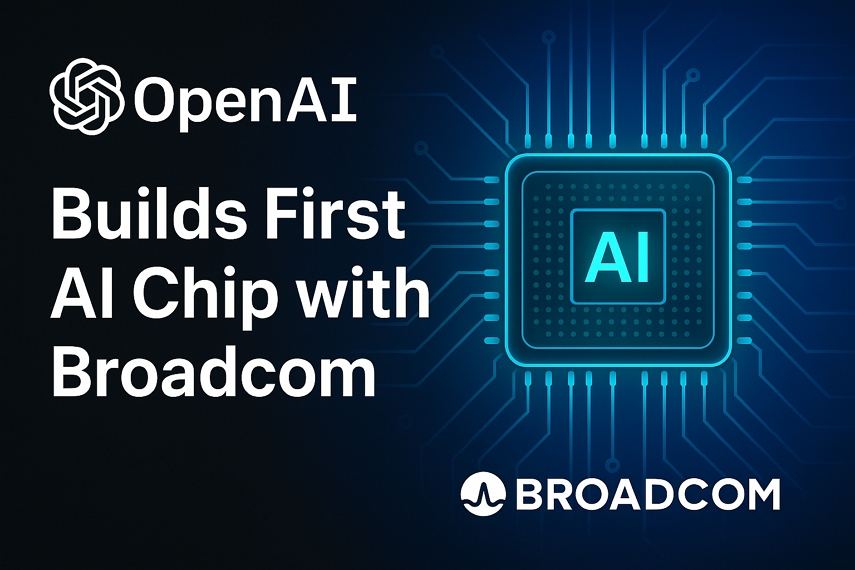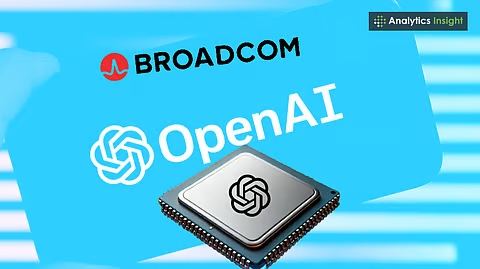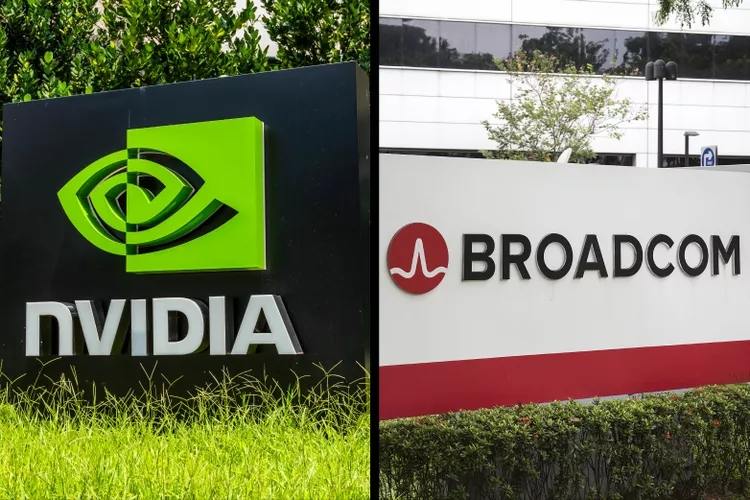OpenAI Builds First AI Chip with Broadcom
Artificial intelligence is no longer just about smart algorithms-it's also about the hardware powering them. In a bold step, OpenAI is building its first custom AI chip with Broadcom, a partnership that could redefine the balance of power in the semiconductor world. With mass production expected in 2026 and an investment worth billion, this collaboration signals a shift in how AI companies secure the computational resources that fuel innovation.

Part 1. Why OpenAI Needs Its Own Chip
The demand for computational power has surged since OpenAI introduced ChatGPT and other advanced models. Currently, OpenAI relies heavily on Nvidia GPUs like the A100 and H100. But with high costs and limited supply, relying on a single supplier is risky.
Developing its own chip offers multiple advantages:
- Cost efficiency: Reducing long-term dependency on third-party hardware.
- Performance optimization: Chips designed specifically for OpenAI's workloads, from natural language models to AI image generation.
- Strategic independence: Greater control over infrastructure and scaling.
This is not just about saving money-it's about enabling faster innovation in AI, including consumer tools like AI photo enhancers and video upscalers, which demand reliable compute to process high-resolution media in real time.
Part 2. Inside the OpenAI-Broadcom Partnership
The partnership with Broadcom is more than a business deal-it's a strategic bet on the future of AI hardware. OpenAI has reportedly committed $10 billion to ensure the success of this initiative.
- Broadcom's role: Leading chip design and leveraging advanced semiconductor manufacturing.
- OpenAI's plan: Secure a scalable supply of accelerators fine-tuned for AI applications.
- Timeline: Mass production scheduled for 2026, initially for OpenAI's internal use.
This move signals OpenAI's transformation from a software-first company into a vertically integrated AI powerhouse.
Part 3. Market Reaction and Stock Impact
The financial community has been quick to respond, highlighting the significance of this partnership for both companies. The stock market serves as a real-time indicator of how investors interpret industry shifts.
- Broadcom shares surged 7-16% in the days following the announcement, making it one of the top performers in the S&P 500.
- Analysts have placed Broadcom among the so-called "Magnificent Eight" stocks, predicting rapid growth in AI revenue by 2030.
- Nvidia, though still dominant, may face stronger competition sooner than expected.
Investors and analysts agree on one point: the collaboration signals a new era of competition in AI hardware, which will likely accelerate product innovation and bring more efficient compute to market-benefiting everyone from enterprises to users of advanced AI editing tools.
Part 4. Industry Implications
The OpenAI-Broadcom deal is more than financial headlines-it's a strategic shift that will impact every layer of the AI ecosystem. Let's break it down by stakeholder.

For OpenAI
For OpenAI, this partnership is about freedom and optimization. By creating hardware that is tailor-made for its massive models, OpenAI ensures it won't be limited by supply chain bottlenecks or external costs. This also empowers the company to accelerate innovations in AI tools-from photo enhancers that sharpen details to voice changers that adapt in real time-without waiting for GPU deliveries.
For Broadcom
Broadcom gains a once-in-a-generation opportunity. The $10 billion order places it squarely in the AI spotlight. Beyond revenue, this cements Broadcom's reputation as a rising force in AI semiconductors, positioning it as a credible alternative to Nvidia. This strategic leap could expand Broadcom's influence in industries ranging from cloud infrastructure to creative AI software.
For Nvidia
Nvidia still leads in terms of GPU dominance and software ecosystems like CUDA. However, the partnership represents a warning shot. Competitors are entering the market with serious backing and ambitious roadmaps. If OpenAI's chips perform well, Nvidia will face pressure to innovate even faster.

For the AI Ecosystem
Perhaps the most important implication lies in the broader AI community. With more suppliers entering the chip race, innovation will accelerate, costs may stabilize, and accessibility will improve. For creators and businesses, this could mean faster video rendering, smoother voice processing, and higher-quality image enhancements-all powered by more abundant and efficient AI hardware.
Part 5. Expert Opinions and Analyst Commentary
Industry experts see this move as a pivotal moment. Some financial analysts forecast that Broadcom could capture up to 20% of the AI chip market by 2030, while others caution that Nvidia's entrenched lead-particularly in software-remains formidable.
Technology commentators highlight the symbolism: AI is no longer just about data models; it's about full-stack integration where companies control both software and hardware. For OpenAI, this could unlock a new cycle of innovation, ensuring its AI applications-from enterprise-grade APIs to consumer tools like AI video enhancers-are supported by hardware that is purpose-built, scalable, and cost-effective.
Challenges Ahead
Despite the optimism, challenges loom large. Designing and producing chips at Nvidia's level of performance is no small feat. OpenAI and Broadcom face hurdles such as:
- Performance risks: Will the chips match or exceed Nvidia's speed and efficiency?
- Timeline delays: With production slated for 2026, unexpected setbacks could push the timeline further.
- Market uncertainty: While AI demand is skyrocketing now, future adoption curves may stabilize, impacting returns on investment.
These challenges highlight that the partnership is not a guaranteed victory. Still, the potential rewards-reduced dependency, optimized performance, and accelerated AI adoption-make the risk worthwhile.
Part 6. OpenAI Builds First Chip with Broadcom FAQs
OpenAI and Broadcom expect to begin mass production in 2026. Initially, the chips will be used internally to power OpenAI's services like ChatGPT, DALL·E, and enterprise APIs. Depending on performance, the chips may also extend to cloud providers in later phases.
Nvidia GPUs are powerful but costly and often in short supply. By collaborating with Broadcom, OpenAI gains greater independence, cost savings, and chips optimized for its specific workloads. This doesn't mean Nvidia is out of the picture, but it reduces the risks of over-reliance.
Reports estimate the collaboration at around $10 billion, one of the largest AI hardware investments ever announced. This reflects OpenAI's belief that custom chips will be essential for scaling future AI.
In the short term, Nvidia remains dominant thanks to its hardware and CUDA software ecosystem. But in the long run, if Broadcom and OpenAI succeed, the market could diversify, leading to lower costs, more competition, and greater innovation-benefits that extend to businesses using advanced AI tools like video editors, voice changers, and photo enhancers.
Conclusion
OpenAI's decision to build its first AI chip with Broadcom is a milestone that could reshape the future of artificial intelligence. With billions invested, stock markets buzzing, and industry dynamics shifting, this partnership is more than a technological play-it's a declaration of independence from Nvidia and a bet on a more competitive future.
For businesses and creators, the downstream benefits could be transformative. As AI hardware becomes more powerful and accessible, tools like HitPaw AI video enhancer, voice changer, and photo enhancer will be able to deliver even smoother, faster, and higher-quality results.
The AI chip wars have officially begun-and OpenAI's move with Broadcom might just set the pace for the decade ahead.
Leave a Comment
Create your review for HitPaw articles









